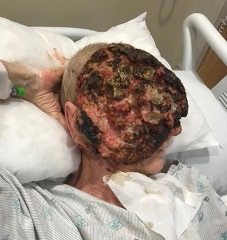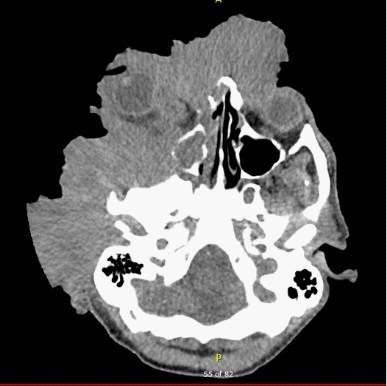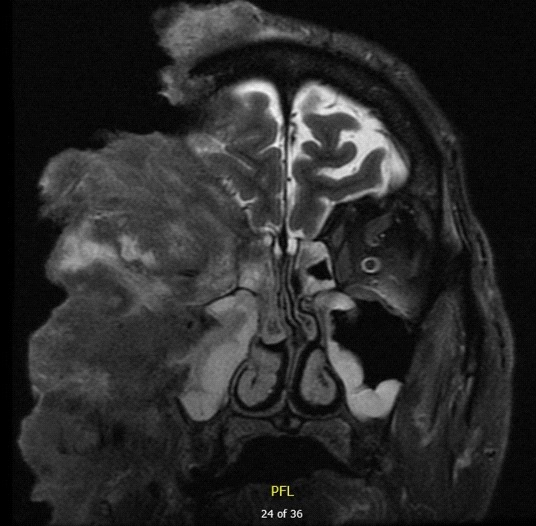
Journal of Clinical Images and Medical Case Reports
ISSN 2766-7820
Case Report - Open Access, Volume 2
Locally advanced squamous cell carcinoma with extensive destruction of face
Venumadhavi Gogineni
4415 Heritage Avenue Apt #8B, Okemos, MI 48864, USA.
*Corresponding Author: Venumadhavi Gogineni
4415 Heritage Avenue Apt #8B, Okemos, MI 48864,
USA.
Email: gogine10@msu.edu
Received : Jun 18, 2021
Accepted : Aug 25, 2021
Published : Aug 31, 2021
Archived : www.jcimcr.org
Copyright : © Gogineni V (2021).
Citation: Gogineni V. Locally advanced squamous cell carcinoma with extensive destruction of face. J Clin Images Med Case Rep. 2021; 2(4): 1286.
Clinical image description
A 58-year-old male with a past medical history of squamous cell carcinoma and basal cell carcinoma presented to the emergency department with complaints of right facial mass, loss of vision, and frequent falls due to visual disturbances. The mass was also associated with pain and purulent drainage.
On examination, the patient had a large necrotizing and ulcerative mass occupying the entire right hemiface with complete destruction of facial anatomy including the right eye and nose as shown (Figure 1).
On further inquiry, the patient stated that he noticed a “Little Bubble” on his face 3 years ago, which has been progressively worsening since then. He was estranged from his family and had been living alone. The patient did not seek medical care earlier for reasons he did not want to share with the medical team despite our multiple attempts at patient-centered interviewing. He recently established contact with his daughter who ultimately convinced him to seek medical attention. The patient was diagnosed with squamous cell carcinoma and basal cell carcinoma over his face and scalp several years ago, which was successfully treated with surgery at that time. However, he did not follow up and had not seen a physician in several years.
CT and MRI imaging demonstrated extensive right scalp mass eroding into deeper intracranial, intraorbital compartments, and paranasal sinuses (Figure 2 & 3 respectively). Biopsy of the lesion revealed invasive keratinizing squamous cell carcinoma. A multidisciplinary team including medical oncology, radiation oncology, and surgery services deemed that the tumor was unresectable and palliative radiotherapy was offered. The patient and his family decided to pursue comfort-oriented care, and he was subsequently discharged to hospice.



